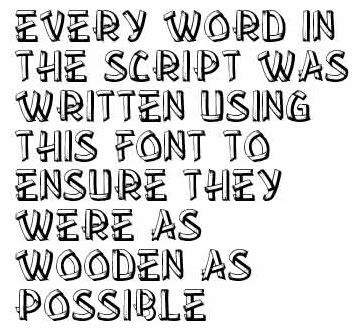Why I Learned to Type.
Instapundit writes The Death of Cursive, linking to an article in the Washington Post that reports:
The computer keyboard helped kill shorthand, and now it’s threatening to finish off longhand.
When handwritten essays were introduced on the SAT exams for the class of 2006, just 15 percent of the almost 1.5 million students wrote their answers in cursive. The rest? They printed. Block letters.
I’m 44, but I haven’t written in cursive in decades. I quite literally no longer can.
Put bluntly, my handwriting sucks. My mother says I should have been a doctor. The computer keyboard didn’t kill my longhand. I learned to type because I knew that, in order to communicate via the written word, it was a far better option for me.
Many educators shrug. Stacked up against teaching technology, foreign languages and the material on standardized tests, penmanship instruction seems a relic, teachers across the region say. But academics who specialize in writing acquisition argue that it’s important cognitively, pointing to research that shows children without proficient handwriting skills produce simpler, shorter compositions, from the earliest grades.
Simpler, shorter compositions? Obviously they haven’t been reading this blog.
Scholars who study original documents say the demise of handwriting will diminish the power and accuracy of future historical research. And others simply lament the loss of handwritten communication for its beauty, individualism and intimacy.
“Future historical research” of the kind typified by Michael Bellesiles’ Arming America? And, really, what does handwriting have to do with “beauty, individualism and intimacy”? Does no one on the WaPo read Lileks? Mark Steyn? Victor Davis Hanson? Would their work read any better if it was printed in longhand rather than Times New Roman?
Cursive script was invented because of the quill pen. Picking up and setting down the point of the quill produces blotches, so to make the paper as clean as possible it was best if one wrote with one continuous motion, nib always in contact with the paper. When steel nibs and then fountain pens were created, that problem still existed. (Back when I still wrote cursive, I loved writing with fountain pens. My penmanship still sucked, but I liked the look of it.) But in the era of the Bic ballpoint, it’s not a problem anymore. And in the electronic age where text appears in pixels, cursive has – rightly – gone the way of the dodo bird. I do not lament its loss.
Instead, we have a myriad of fonts to choose from (though not so much on Blogger), and those fonts can add much to the content and feeling of the written piece. Like this James Lileks review of Star Wars, Episode III: Revenge of the Sith:

Wouldn’t be the same in cursive, would it?